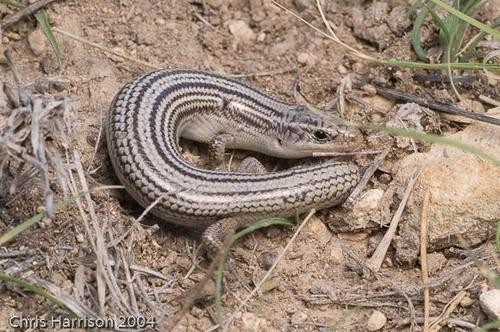Plestiodon multivirgatus epipleurotus
A species of Skinks Scientific name : Plestiodon multivirgatus epipleurotus Genus : Skinks
Plestiodon multivirgatus epipleurotus, A species of Skinks
Scientific name: Plestiodon multivirgatus epipleurotus
Genus: Skinks
Content
Description General Info
Description
Plestiodon multivirgatus epipleurotus are predominantly nocturnal, using shifting light and shadows for camouflage while foraging for their preferred invertebrate prey. Their ecosystem role as healthy insect regulators highlights their importance in controlling population dynamics. Intriguingly, plestiodon multivirgatus epipleurotus use specific wagging tail movements in social interactions and threat displays, enhancing their communication and survival advantage.
General Info
Lifespan
5-10 years
Diet
Plestiodon multivirgatus epipleurotus primarily subsists on small insects and arthropods, actively foraging during the day. The dietary pattern showcases a particular preference for beetles and spiders, showing an adaptability based on seasonal availability of these prey items.
Appearance
Plestiodon multivirgatus epipleurotus is a small, sleek lizard characterized by its hooded eyelids and slightly keeled scales. It possesses a slender body and a notably long tail. Its skin color encompass hues of brown and tan, with slender, darker brown stripes running longitudinally. Multiple blackish-rimmed white spots ornament its body side, while the belly usually appears pale. No significant differences in size or coloration are noticeable between genders or across different ages.
Behavior
Plestiodon multivirgatus epipleurotus is notable for its solitary lifestyle and skilled climbing behavior. It exhibits outstanding camouflage abilities to hide from predators within its natural habitat. It doesn't demonstrate distinct territorial behavior, but it tends to remain in a specific home range. The species' primary activities include foraging during the day and resting in tree crevices or under rocks during the night.
